The development of ways to combat enemy anti-tank weapons during the war
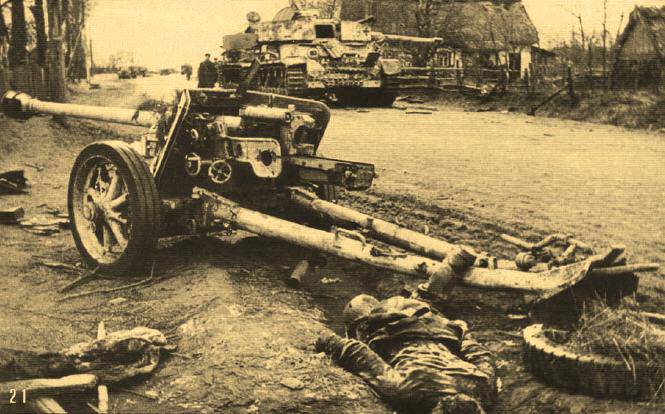
Mass saturation of units and formations of modern armies tanks and other armored vehicles as a result led to the fact that they on the battlefields became one of the most important. Therefore, the confrontation of anti-tank weapons (PTS) with them, as shown by a number of local wars of the twentieth century, is the main content of modern combined arms combat.
Extremely rich experience in fighting enemy tanks and overcoming its anti-tank defense was gained during the years of the Great Patriotic War. Consider some of the directions of development of ways to combat PTS in overcoming the anti-tank defense of the German troops.
To combat tanks, the fascist command widely used field and anti-aircraft artillery, Aviationspecial anti-tank weapons and tanks. To increase the effectiveness of field artillery in the fight against well-armored Soviet tanks in the ammunition of caliber systems up to 155 mm, the enemy began to include cumulative shells in 1943. They hit armored targets at ranges of up to 800 m. Armor-piercing shells and anti-tank bombs also entered the arsenal of aviation. The special combat vehicles of the German forces were continuously improved. The effective fire range and armor penetration of German anti-tank artillery by the summer of 1943 increased 3 times. Self-propelled anti-tank artillery and special melee combat vehicles (faustpatrons, anti-tank rifles, grenades, etc.) were created.
Tanks as a multipurpose combat weapon were also the most effective anti-tank weapon, especially in the offensive and in the movement of mobile defense. An analysis of Soviet tank combat losses shows that, on average, 75% of them were hit by artillery and tank fire at a range of 500-1500 m. From other means of loss were: from melee PTS - 12,6%, anti-tank mines - 9%, aviation - 3,4% .
For the defense of the main lines in 1944-1945. The Nazis created a high density of TCP. Although the enemy was echelled by TCP, however, the bulk of them were located in the main lane, from 6 to 8 kilometers in depth. The order of 80% PTS within it was located in the first two positions. To defeat Soviet tanks on the march, in the waiting and departure areas, the enemy used aircraft and long-range artillery. With the approach of our tanks to the front line of the German defense and with the breakthrough of its main line, all the anti-tank weapons of the enemy were consistently connected to combat.
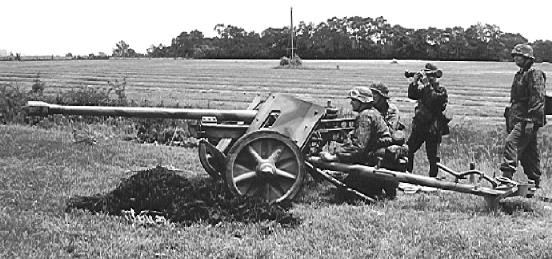
As the experience of the most important offensive operations of the third period of the Patriotic War showed, the probability of a successful breakthrough of the German defense depended, first of all, on the degree of destruction of anti-tank weapons, the rate of attack, and also on the effectiveness of the fire support of the advancing tanks. Of particular importance was the defeat of the adversary’s TCP by artillery fire and air strikes in preparation for an attack. The experience of Lviv-Sandomirka, Vistula-Oder, Berlin and other operations shows that the high reliability of fire destruction of the TCP was achieved in the course of a short, but powerful artillery preparation. At the same time, the raids at the beginning and end of the artillery preparation were especially important. Anti-tank defense of the enemy was suppressed during the period of artillery preparation to the full depth of the main line of defense. However, due to the fact that the caliber of almost 70% artillery was less than 100 mm, it was possible to reliably suppress the adversary’s TCP only in the first and second positions, that is, to a depth of the order of 5 km.
For the destruction of the observed enemy PTS during the artillery preparation period, guns that conducted direct fire were used very effectively. Their density was usually 20-30, and in some operations, up to 60 and more trunks per breakthrough 1 km. Along with artillery, a large amount of fire destruction tasks for the adversary’s TCP were performed by front-line aviation, which produced during the war 46,5% of all its sorties in support of the fighting of tanks and infantry.
Aviation suppressed anti-tank defenses, delivering massive strikes by assault and bomber air divisions and corps on anti-tank strongholds, artillery positions, and anti-tank reserves of the enemy. Usually these actions were linked in time and objects with artillery strikes, actions of tanks and infantry.
The most characteristic was the following sequence in the application of air and artillery strikes (it can be traced by the example of the 3 of the Belarusian Front in the East Prussian operation). Before the start of artillery preparation, a massive strike followed with the involvement of most of the bomber and up to 20% attack aircraft on objects located in the main German defense zone. In the course of the artillery preparation, aviation made strikes against TCP, tanks and other enemy fire weapons on the flanks of the breakthrough, in the depths of the two first lines of its defense. Aviation training ended immediately before the start of the attack with a massive strike by large aviation forces against anti-tank targets in the breakout area.
In cases where the enemy has a high-density PTO with a high density of TCP in the main defense zone (East Prussian operation, Vistula-Oder and Berlin operations), artillery support of the attack of Soviet tanks and infantry was carried out by one or two firing shafts to a depth of 2-4 km or by sequential concentration of fire. This made it possible to significantly reduce the effectiveness of the enemy’s anti-tank fire in overcoming the first and second positions of his main defense line.
For maximum fire impact on the TCP and other enemy fire weapons during an attack by tanks, achieving continuity in the transition from artillery preparation to artillery support of the attack was important. So, during the Vitebsk-Orsha operation, the last raid fire went on increasing, up to the maximum allowable mode. In terms of power and character, it almost corresponded to the firing shaft, which was why a surprise attack was achieved. For 2-3 minutes before the end of the artillery preparation, one-third of the artillery concentrated fire at the first line of the firing shaft (in 200 meters from the front edge). At the end of the artillery preparation, the rest of the artillery also moved the fire to the same line, but it was conducted in small jumps (there was a "slide" of fire), respectively, advancing the advancing tanks and infantry. This provided a breakthrough in the first position with relatively small losses in the tanks.
The defeat of the TCP and aircraft tanks with the beginning of the air support for the attackers was usually carried out by layered strikes on 40-60 aircraft. The areas of strikes of each echelon of aircraft were successively shifted 1-1,5 km into the depths of the fascist defense, providing continuous fire impact on its TCP from the air. The artillery escort of the attacking forces to the depth of the tactical zone of the German defense was carried out both in the pre-planned areas by successive concentration of fire and by the call of the commanders of tank units and artillery spotters in the radio tanks.
In order to increase the effectiveness of the fire defeat of the PTS and enemy tanks by artillery at that time it was planned to reassign it to the rifle battalions, regiments and tank brigades. The fighting revealed the urgent need for direct support of the attacking tanks of the first battle line with self-propelled artillery installations (SAU), which destroyed the PTS with their fire and fought against the counterattacking enemy tanks. To solve these problems was created armored self-propelled artillery. Already in 1943, it became organizationally part of tank units and was the best firing means for escorting tanks in the attack. Thanks to armor protection and high maneuverability, the ACS could act directly in tank battle formations, and their more powerful weapons made it possible to destroy the adversary’s PTS even before our armored vehicles entered the zone of effective enemy fire. In the most successful operations, the ratio of SAU and tanks in the breakthrough of the German defense was 1: 2, i.e. every two tanks supported one ACS.
The experience of a number of operations of the third period of the Patriotic War showed that, after artillery and air preparation had been completed, tanks supporting infantry at a depth of two to five kilometers were subjected to fire from German PTS and tanks that had been preserved and transferred to the breakthrough site. The density of artillery fire after the completion of artillery preparation decreased. In these cases, the effectiveness of the fight against PTS and enemy tanks depended on the construction of the battle order of the tanks, the tactics of actions and their close interaction with the ACS. Self-propelled artillery attacked, as a rule, in the combat formations of the attacking infantry and supported the tanks of the first combat line with fire. The second echelon of tanks (when building a tank brigade in two echelons) advanced for infantrymen at a distance of up to 200 m.
During the breakthrough of a strong anti-tank defense (Berlin operation, in the 1 of the Byelorussian Front and East Prussian operation in the 2 of the Byelorussian Front) heavy tanks were used, respectively, in the indicated operations 33% and 70% of the NPP tanks. Combat experience revealed that the combat properties of armored vehicles were important for successful combat against PTS and enemy tanks. Therefore, during the war all types of Soviet tanks were continuously improved. The caliber of medium-tank tanks increased from 76 mm to 85 mm, and heavy - from 76 to 122 mm. As a result, the direct shot range increased by 30-50%, the effectiveness of hitting targets increased. Increased armor protection, by installing the commander's turret on combat vehicles, improved visibility, improved fire accuracy and maneuverability of tanks.
During the entry into the breakthrough of mobile units of armies and fronts, the defeat of the PTS and tanks in front of the breakthrough border and on its flanks was carried out by artillery and aircraft during the period of providing entry, fire tanks, self-propelled guns, first-level artillery. For example, for the security of the entry into the battle 3 th Guards. During the Lvov-Sandomierz operation, five artillery brigades and four rifle divisions were involved in the tank army, and the 2 th guards were brought into battle. the tank army in the Berlin operation provided five artillery brigades, two regiments and artillery of five rifle divisions. This made it possible to attract from eight to twelve divisions of artillery and mortars to engage the enemy’s TCP in the lanes of the entry into battle of tank armies.
Artillery usually suppressed enemy anti-tank defenses in front of and on the flanks of mobile groups to a depth of four to five kilometers from the entry line, but most reliably to depths of 2-2,5 km. The greatest effectiveness in the defeat of the PTS was achieved when the fire was planned in advance, and the artillery officers from tanks that were in combat formations of armored battalions carried out the call and corrected it by radio.
Large role in the defeat of TCP and enemy tanks when entering mobile groups played by aviation. The suppression of anti-tank defense during this period was carried out, as a rule, during an aviation offensive involving up to 70% of front aviation. The air offensive included: preliminary air preparation, when tank and anti-tank reserves were suppressed; direct aviation training (the aircraft continued their strikes against the German reserves, and also suppressed TCP, tanks, artillery); aviation support of forward detachments and the advance of the main forces, during which, along with strikes against reserves, aviation suppressed TCP and enemy tanks in front of advancing tanks at the request of commanders of armored formations. The most powerful airborne impact on enemy anti-tank defenses was in the first 2-3 hours after entering mobile groups.
After reaching the operational depth and the detachment of mobile groups from the main forces, they lost the support of artillery of combined-arms forces. The suppression of the enemy’s anti-tank defense at intermediate defensive lines at that time and the fight against his tanks were carried out by standard and attached artillery, aircraft, tank and motorized infantry fire.
Success in the fight against PTS and enemy tanks in the operational depth strongly depended on the saturation of tank and mechanized corps (armies) with artillery and the number of supporting aircraft. The saturation of tank armies with artillery averaged 18-20 guns with mortars for each battalion. The ratio of tanks and SPG was within: one medium or heavy SPG on the 3-4 tank.
To accompany tank brigades in the 1 tank army in the Lviv-Sandomierz operation, artillery tank support groups were created according to the number of brigades based on self-propelled artillery. Sometimes these groups included anti-tank and rocket artillery. The creation of highly mobile artillery tank support groups increased the independence of tank brigades against PTS and enemy tanks in their highly maneuverable combat operations.
According to the experience of the most important operations of the third period of the war, the actions of the tank army in the operational depth supported up to three air corps. The massive use of melee PTS in the German army sharply marked the problem of fighting them and sharply limited the independence of tank combat operations. Additional measures were required to ensure the actions of armored vehicles. In particular, thorough reconnaissance of the firing positions and locations of enemy TCP was conducted and their destruction by artillery and aircraft. Mandatory support of each tank by machine gunners was introduced (Berlin operation). Enhanced tank security at their location on the spot. The most important condition for the suppression and destruction of the melee PTS was the qualitative interaction of individual tanks with small units and infantry groups, both during the breakthrough of the German defense and during operations in the operational depth.
In the fight against PTS and enemy tanks were involved almost all the combat means possessed by the troops. This task during the offensive was solved in several directions simultaneously. The main ones were: an increase in the degree of fire damage of the adversary’s TCP by artillery fire and air strikes during the preparation of the attack; improving the construction of the battle formations of tank formations in order to ensure the most effective interaction of all combat assets during the offensive; improvement of combat properties of tanks and self-propelled guns; creation of the most acceptable organizational structure of tank units and formations; Achievement of continuous fire support of the attacking echelon of tanks throughout the combat.
Sources:
Reznichenko V. Tactics. M .: Military Publishing. 1987 C.183-192
Sychev K. Fight against anti-tank weapons. // Military Thought. 1989. No.12. C. 34-46
Tsynkalov A. Fighting enemy anti-tank weapons. // visage 1977. No.7. C.18-23.
Middeldorf E. The Russian Campaign: Tactics and Weapons. SPb .: Polygon; M .: ACT, 2000. C. 187-189.
Sychev K. Fighting rifle division. M .: Voenizdat, 1958. C.33-39.
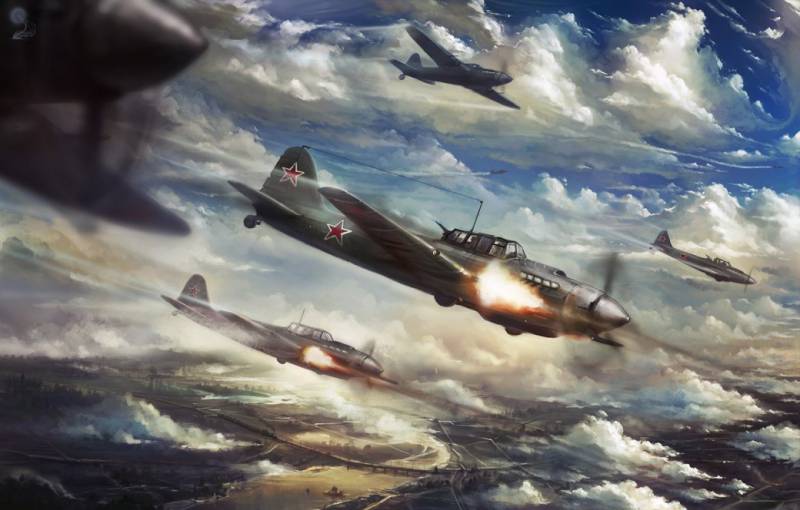
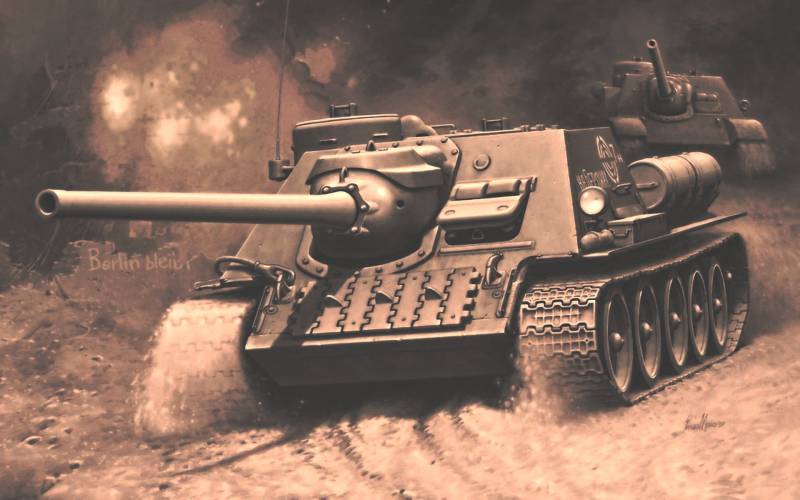
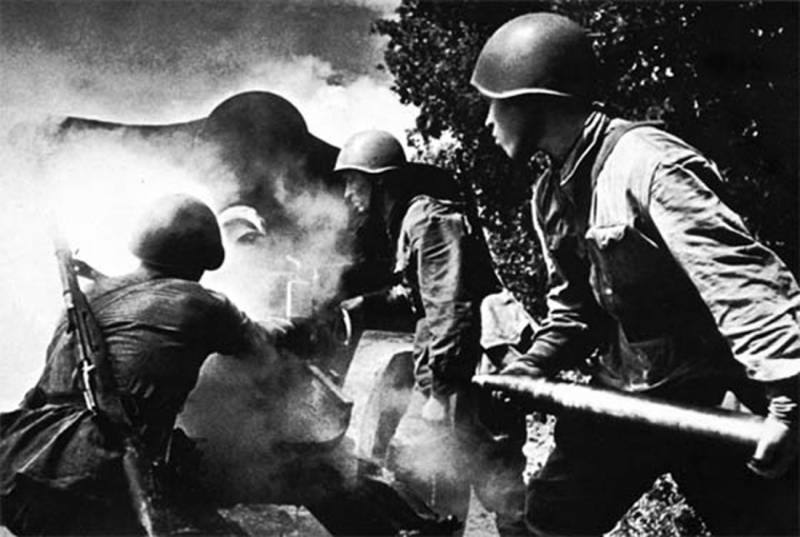
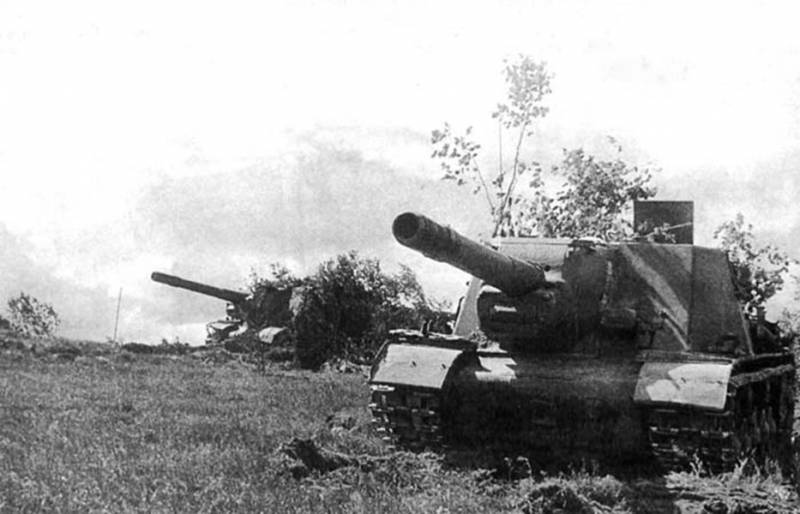
Information